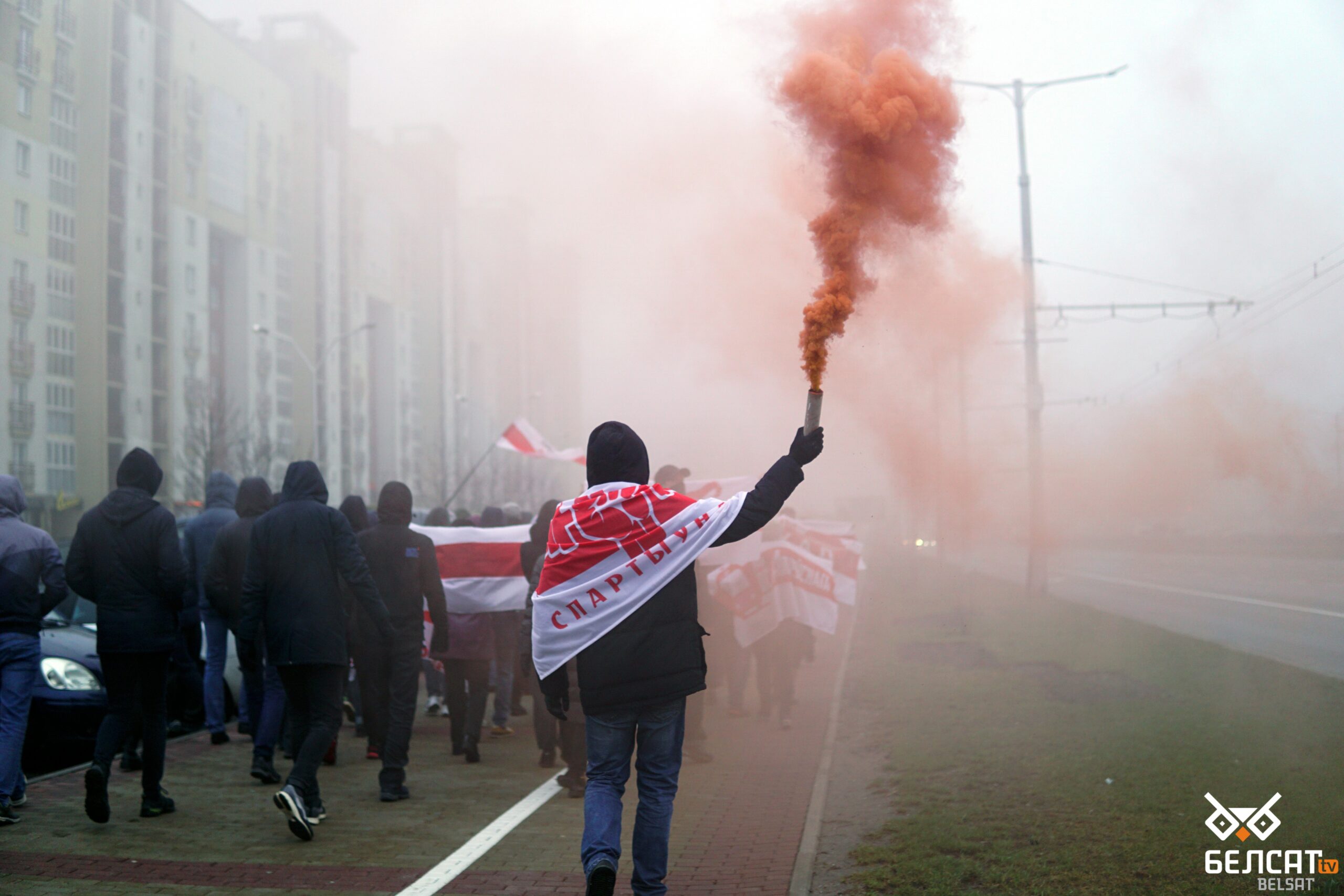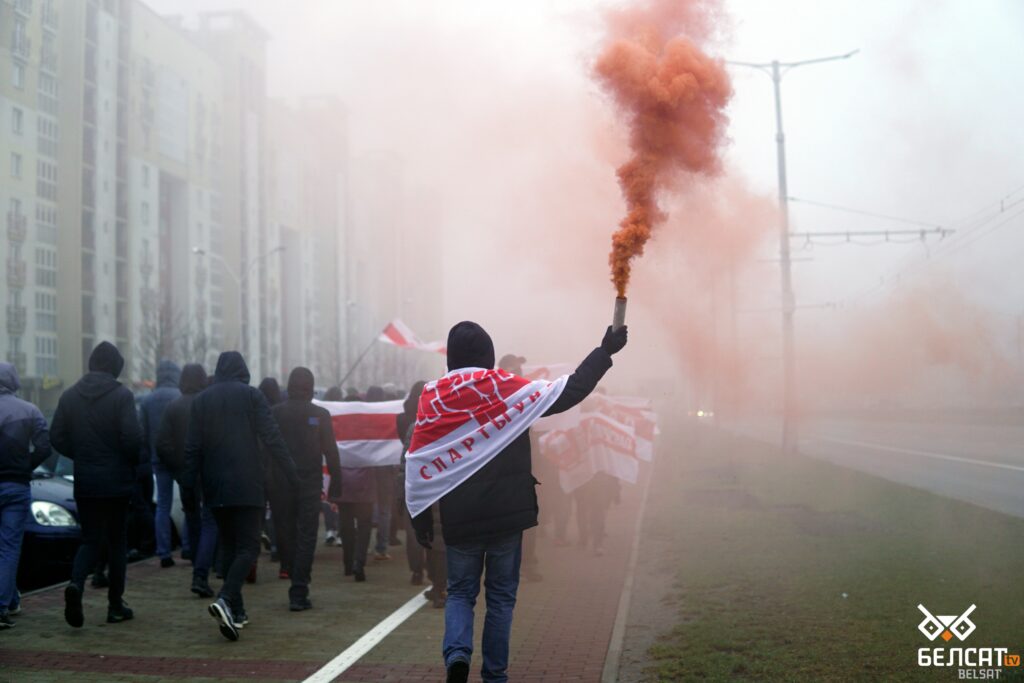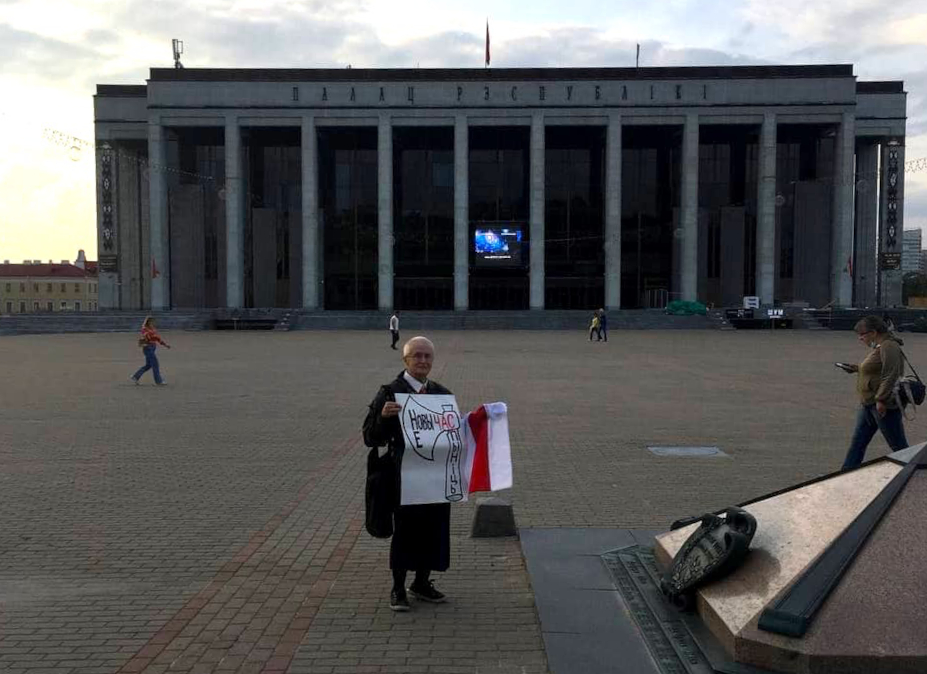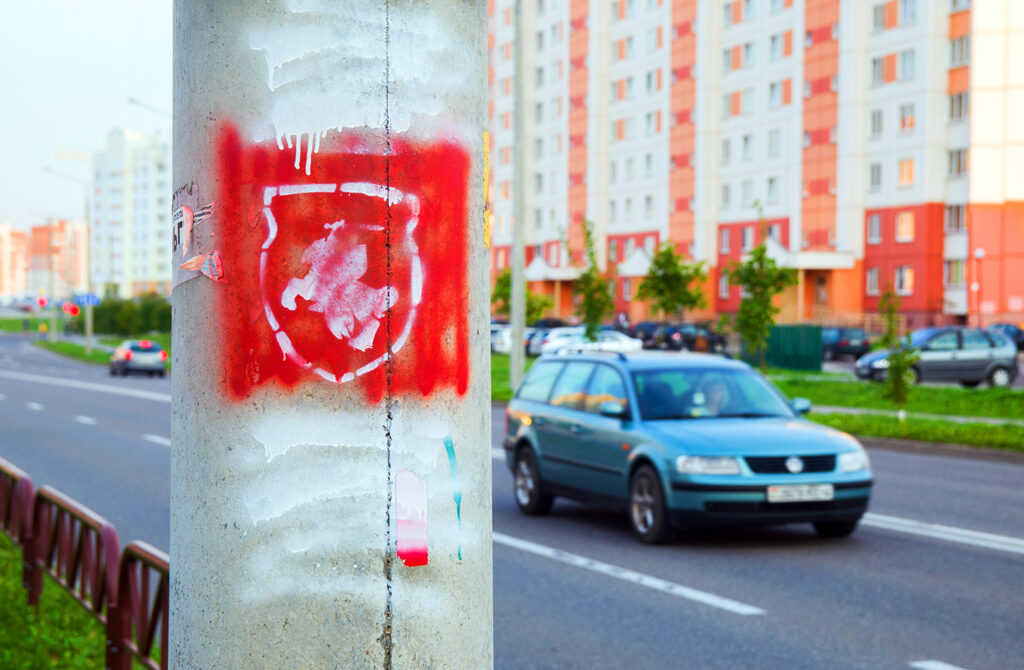How Belarusians resisted regime in 2021

Despite the brutal repression, Belarusians continued to fight Lukashenko’s regime in 2021. Courtyard marches, flash mobs, protest graffiti and leaflets, destruction of surveillance cameras, railroad blockage, and large-scale cyberattacks – the resistance did not stop for a single day. Belsat has put together an overview of the protest activities for the past year, which we present in a condensed form.
Courtyard marches
In early 2021, Belarusians continued to actively participate in Sunday courtyard marches as well as solidarity chains in different Minsk neighborhoods. In addition to the marches, themed campaigns were held on Sundays, for instance, against the plans to declare the white-red-white flag an extremist symbol. The authorities responded to local protests by cranking up the repression. Regular raids began, and individual risks for the street protests’ participants increased significantly while the hope for a quick revival of mass protests faded.
The opposition’s attempts to organize a centralized rally on Freedom Day, March 25, turned out to be a failure: security services drew large forces to Minsk, detaining over 200 people and preventing people from gathering together (nevertheless, the Belarusian diaspora abroad held massive solidarity rallies on this day – note by Voice of Belarus.)
All this led to a significant decrease in the activities of courtyard communities and at the same time to an increase in conspiracy measures. In the second half of the year, courtyard marches became rare. The protests would typically be announced after the fact, yet security forces managed to detain protesters during the rallies on several occasions.
However, security services were never able to completely stifle the courtyard protest movement. In late December, it was announced that several communities founded the Protest Courtyards Coalition, a platform designed to coordinate protest actions at the grassroots level.
Solidarity campaigns and flash mobs
The increased secrecy of the protesters and decrease in the number of active protesters have created a new trend: solidarity campaigns limited to taking pictures with protest posters and white-red-white flags where people’s faces are not visible. Although taking such photos is also a risky venture, they appear online almost every day.
However, the protests in a more traditional format did not stop either. For instance, Belarusian women continued taking walks with white-red-white umbrellas all year long. This beautiful flash mob became one of the most prominent protest symbols. The last umbrella walk took place in November.
Belarusian activists also held a number of single-picket protests. They hid their faces in most cases, but some fearless people openly protested in the face of state terror. For example, on 13 May, Adam Bialiatski, a son of the human rights defender Ales Bialiatski, went on a picket protest with a poster in support of journalists Katsiaryna Andreyeva and Darya Chultsova who are held behind bars. Legendary activist Nina Bahinskaya repeatedly held single-picket protests with a white-red-white flag.
Leaflets, graffiti, flags
Belarusians expressed their protest in a variety of ways. Throughout the year, supporters of changes have repeatedly displayed white-red-white flags on buildings. People left protest inscriptions on apartment buildings and fences, printed and distributed leaflets and stickers, and painted bus stops and even hay bales in the national colors. Many Belarusians were punished extremely harshly for these harmless manifestations of dissent: they were prosecuted and sentenced to terms in open prisons or penal colonies.
Cyberattacks
This year, the opposition-friendly hacker group Cyber Partisans carried out the largest hacker attack in the history of Belarus known as operation “Inferno”. As a part of the operation, the information system of the traffic police, police databases, the Internal Security Directorate, and the Main Personnel Directorate of the Interior Ministry were hacked. The operation of hundreds of speed cameras and surveillance cameras across Belarus was paralyzed, and the databases of the Ministry of Internal Affairs were compromised. The hackers got hold of the authorities’ phone conversations. Now, Cyber Partisans regularly post incriminating materials about law enforcement officers on the internet and publicly reveal government-use and classified information.
Sabotage activities
At a time when absolutely any expression of dissent is severely punished, up to criminal prosecution, the disappointment of some Belarusians in the effectiveness of exclusively peaceful protests is growing.
In 2021, the anonymous group Busly Liatsiats regularly assumed responsibility for resistance actions in the form of small-scale sabotage. For example, the guerrillas claimed to have destroyed dozens of surveillance cameras, damaged vehicles and property of law enforcers, set fire to objects of infrastructure, and blocked railways. The group representatives emphasize that they act solely in the vein of non-violent resistance: they organize their actions to avoid casualties.
So far, not a single person has suffered from the activities of the regime-opposing guerrillas. The cases when security forces claimed to have prevented terrorist attacks or assassination attempts and blamed the opposition for these actions exhibit clear signs of fabrication.


